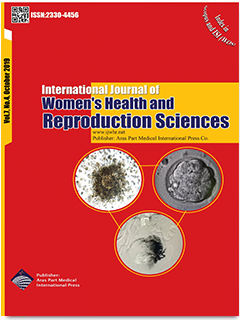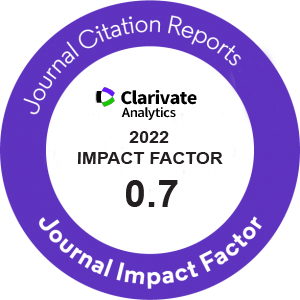| Brief Report | |
| Frequency of Chlamydia trachomatis Infection in Spontaneous Abortion of Infertile Women During First Pregnancy Referred to Tabriz University of Medical Sciences by Nested PCR Method in 2015 | |
| Mehdi Haghdoost1, Sanaz Mousavi2, Mehdi Khanbabayi Gol3, Majid Montazer4 | |
| 1Infectious Disease Group, Tabriz University of Medical Sciences, Tabriz, Iran 2Women?s Reproductive Health Research Center, Tabriz University of Medical Sciences, Tabriz, Iran 3Responsible for the Nursing Research Committee of Imam Reza Hospital, Tabriz University of Medical Sciences, Tabriz, Iran 4Thoracic Surgery Group, Tabriz University of Medical Sciences, Tabriz, Iran |
|
|
IJWHR 2019; 7: 526-530 DOI: 10.15296/ijwhr.2019.87 Viewed : 2790 times Downloaded : 2088 times. Keywords : Chlamydia trachomatis, Nested PCR, Infertility, Spontaneous abortion |
|
| Full Text(PDF) | Related Articles | |
| Abstract | |
Objectives: Chlamydia trachomatis, as the main cause of bacterial sexually transmitted disease (STD), can lead to serious complications such as spontaneous abortion. Therefore, the aim of this study was to determine the frequency of C. trachomatis infection in spontaneous abortion of infertile women who referred to Tabriz University of Medical Sciences during the first pregnancy by means of nested polymerase chain reaction (PCR) method in 2015. Materials and Methods: The present descriptive, cross-sectional study was performed in the infertility clinics of Tabriz University of Medical Sciences from March 21, 2015 to March 19, 2016. A total of 120 infertile women were selected by the convenience sampling method. The specimens were prepared by the Dacron swab after four rotations in the endocervix and discharged into the specific transport medium of C. trachomatis. The DNA extraction was then performed by AccuPrep genomic DNA kit and the DNA was extracted until performing the PCR at -20°C. Next, nested PCR was conducted in 2 rounds and the final product of PCR was agar -2% gel electrophoresis. After entering the data in SPSS, the chi-square test was used to examine the role of factors influencing C. trachomatis infection and a P value less than 0.05 was considered significant. Results: The incidence of C. trachomatis infection in women with spontaneous abortion was 16.66%. In addition, there was a significant difference between the infected and non-infected groups regarding employment (P < 0.04), birth control method (P < 0.03), and the number of sexual intercourses per week (P < 0.001). Conclusions: The prevalence of C. trachomatis in women who became pregnant with infertility treatment and spontaneous abortion was high in this study. Thus, nested PCR is considered an appropriate method for the diagnosis of C. trachomatis and it is essential for pregnant women who experience pregnancy with infertility treatment. |
Cite By, Google Scholar
Google Scholar
PubMed
Online Submission System
 IJWHR ENDNOTE ® Style
IJWHR ENDNOTE ® Style
 Tutorials
Tutorials
 Publication Charge
Women's Reproductive Health Research Center
About Journal
Publication Charge
Women's Reproductive Health Research Center
About Journal
Aras Part Medical International Press Editor-in-Chief
Arash Khaki
Mertihan Kurdoglu Deputy Editor
Zafer Akan























